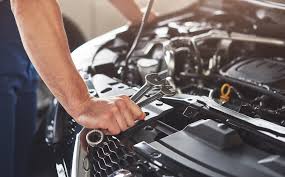When buying a pre-owned engine, mistakes can cost more than the purchase price. You are not just buying metal and parts, you are buying remaining life. Start with the right approach, and you save yourself time, money, and stress.
Focus on Mileage and Usage History
Mileage alone is not the full story, you also need to learn the usage history. A 90,000-mile highway-driven engine can be healthier than a 60,000-mile city-driven one. When looking at maintenance records for pre-owned engines for sale, ask about the vehicle’s usage. Engines from delivery or rideshare cars usually face harder wear.
Know the Exact Engine Code
The year, make, and model are not enough. Vehicles often have multiple engine options in the same year. Find the engine code stamped on the block or listed on the VIN sticker. This prevents buying an engine that fits physically but has incompatible sensors or wiring.
Buy from a Reputable Source
Steer clear of unreliable internet vendors. Select reputable salvage yards, certified rebuilders, or vendors who offer testing reports that can be verified. A trustworthy seller will allow you to examine the engine or will give you thorough pictures and the results of any compression tests.
Verify Compression and Leak-Down Numbers
An engine might look clean but have internal wear. A compression test tells you if each cylinder seals well. A leak-down test is even more precise and can reveal valve, ring, or head gasket issues before purchase. These numbers matter far more than surface condition.
Check for Compatibility with Your ECU
Modern vehicles rely heavily on electronic control units. Even small changes in sensors, intake manifolds, or emissions equipment can cause issues. Compare part numbers and sensor locations to ensure the engine will run properly with your existing ECU.
Consider the Warranty Carefully
A used engine warranty is not a sales promotion, it is coverage. Read what is included and excluded under the warranty. You may need to replace water pumps, timing belts, or gaskets before installing the engine. Doing otherwise may void coverage.
For Signs of Overheating or Neglect
Overheating ruins engines for good. Check for warped metal, burned paint on the head, or crusty coolant deposits. Sludge in the oil filler cap indicates improper maintenance or contaminated coolant. These symptoms are often more important than odometer mileage.
Consider Installation Fees Prior to Purchase
The cheapest engine will cost you the most if installation costs rise. Certain engines require additional parts, new mounts, or reprogramming the computer. Ask for a price of installation prior to purchase.
Ask for Installation Quote
Engines exposed to the weather collect moisture, which rusts internals. The best is a used engine indoors stored, all the fluid drained, and capped. Poor storage shortens life before you ever get to crank it up.
Don’t Hurry the Purchase
Good engines are worth waiting for. Be wary of a seller who gets you to rush into a sale. Verify the data, schedule the tests, and confirm compatibility before you pay out money.
A refurbished engine will get you back on the road for pennies on the dollar compared to the cost of a new engine. The trick is focusing on hard facts: engine code, tested, usage history, and reputation of seller. Skip these steps and you lose your money. Follow them and you get reliability without going broke.





